On this page, we will regularly highlight and summarize an important study on honey bees from the primary literature to grow the knowledge about honey bees particularly for our beekeepers!
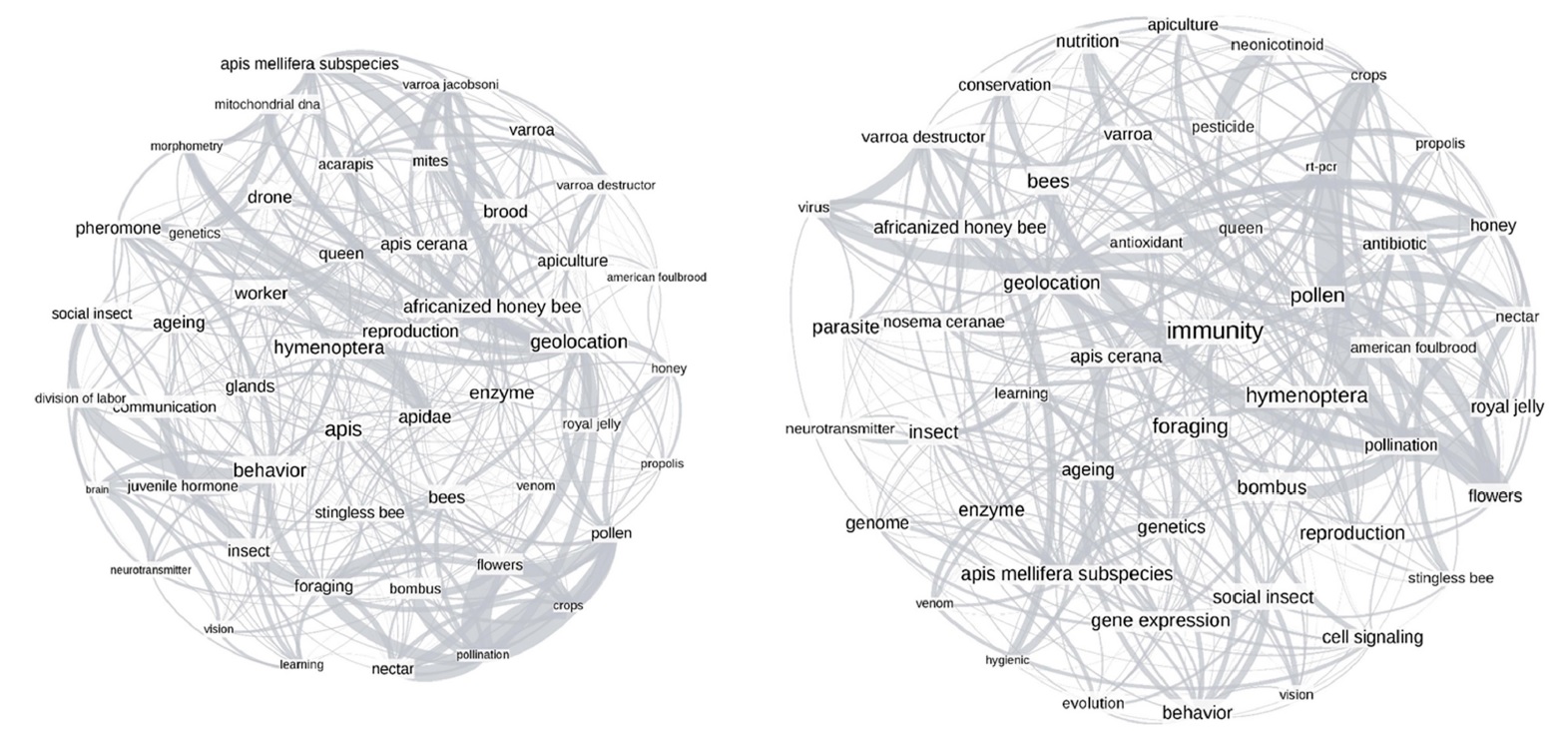
May 2024 (by Alexander Walton)

As summer winds down, colonies start producing “winter bees”. These diutinus bees survive the
whole of winter (or so we hope!), much longer than the typical lifespan of a spring/summer bee.
Interestingly, winter bees retain several nurse-like traits even though no brood is produced during
the winter months. But what triggers the production of winter bees? In their study, Quinlan and
Grozinger (2024) attempted to disentangle potential internal and external cues that may be
involved in inducing winter bee physiology. They focused on whether brood area present in a
colony or the seasonal factors associated with time of year are predictive of winter bees
production. They experientially manipulated the amount of open brood in colonies to address
whether a shrinking brood population elicits the production of winter bees. They performed these
experiments in the summer and the autumn to test whether seasonal differences, other than brood
area, were more likely to stimulate winter bee production. Then, the researchers collected bees
from each of their experimental colonies and measured physiological traits associated with
winter bees, including fat stores, hypopharyngeal glands, and expression of the gene vitellogenin.
Though their removal or addition of brood frames did not actually cause a statistically significant
effect on brood area (perhaps colonies were able to compensate for removed brood by quickly
producing replacement brood), the researchers used statistical models to determine whether
brood area or time of year were better predictors of winter bee physiology. They found that for
each of the traits they measured it was season, and not brood area, that best corresponded with
winter bee traits: Winter bees were produced in autumn, regardless of how much brood was in
the colony. So, it seems that shrinking brood area is not what triggers winter bee production. Yet,
we still do not know what seasonal changes do prompt winter bees. Is it lower temperatures,
shorter days, dwindling pollen acquisition, an increase in foragers hanging around with nothing
to do? Future research is needed to hone in on the factor (or combination of these factors) that
cause this major shift in honey bee physiology and longevity.
April 2024 (by Olav Rueppell)
There are many fungi that specifically attack and kill insects, such as the infamous Cordyceps.

They attack ants and wasps (such as this one in the picture) but do not feature prominently in honey bees. We could ask why, but that is not the topic of a new publication out of the UK, which instead studied how the tendency of another fungus to kill aphids can be effected by competition among different strains of fungi within and between aphid hosts. It turns out that the group composition and context of infection make a big difference, which could be important for understanding the many other diseases that plague our honey bees.
March 2024 (by Alexander Walton)
Drones always seem to get a tough break. Male honey bees face the binary fate of (1) mate and die in the process, or (2) don’t mate and be forcibly evicted from the hive when winter comes. In a new study from scientists at Purdue University, Gilchrist et al. report evidence that worker bees make quality judgements about drones throughout the reproductive season and oust the males that exhibit signs of poor health. The researchers generated immune-challenged drones by pricking males with pins laced with lipopolysaccharides. These molecules are typically found on the outer membrane of bacteria and illicit an immune response in honey bees. This treatment caused males to lose mass and resulted in a shift in their cuticular hydrocarbon (CHC) profile. These waxy hydrocarbons that form a layer on the cuticle commonly prevent desiccation in insects and, in social insects such as ants and bees, are an important component of nestmate recognition. Previous research has shown that changes to worker bee health can be accompanied by a shift in their CHC profile and other workers sense it. This study suggests that the same is true for drones: immune-challenged males got the boot at a higher rate than control males. However, because treatment with lipopolysaccharides caused both a CHC shift and a reduction in mass, it is not clear which marker of poor health workers use to assess males. Beekeepers are well-aware that workers assess and euthanize failing or poorly mated queens. It appears that workers also evaluate the quality of males (the other reproductive caste in the colony) and will oust sickly drones.
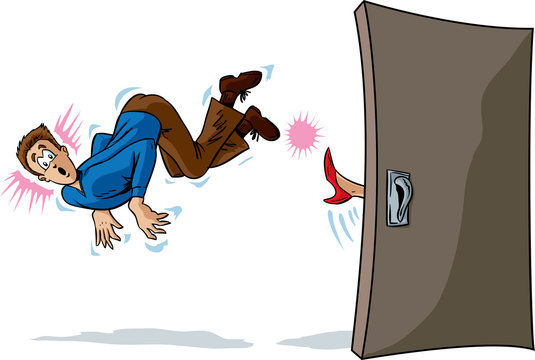
February 2024 (by Gursimran Toor)

January 2024 (by Olav Rueppell)
Varroa vectors several viruses and viruses help Varroa by compromising the bees health defenses. It was also already known that the presence of Varroa in an area can change the virus evolution to promote more harmful variants over multiple years. However, this study shows for the first time that Varroa increases the amount of many different viruses in honey bees, even some viruses that are not known to be vectored by Varroa.
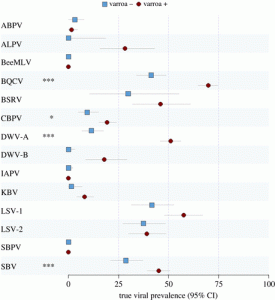
The graph above shows how a range of viruses are lower without Varroa (in blue) than with Varroa (in red), a trend that is particularly apparent in black queen cell virus, deformed wing virus-A, and sacbrood virus. The study is also noteworthy because it was conducted across four geographical regions, including Canada! Read more at this link.
December 2023 (by Alexander Walton)

“Murder hornets have arrived in Canada!” You likely remember reading these foreboding words
in late 2019 and feared what it could mean for both your bees and for any future picnic plans.
The Giant Asian Hornet (Vespa mandarinia) was known to decimate Apis mellifera honey bee
colonies, and its detection in British Columbia and in the state of Washington portended a
potential invasion of a nasty new pest. Yet, in 2023 the threat seems to have been overblown.
In this assessment of hornets and their potential to invade new habitats, the authors draw on
knowledge of successful hornet invasions to discuss whether the Giant Asian Hornet could
establish itself in North America. Intense surveying efforts by both US and Canada governments
located and eradicated a small number of V. mandarinia nests, which genetic data revealed to
have originated in Japan, Korea, and China. The hornet invasion may have been doomed to fail
due to the genetic bottleneck imposed by the small number of wasp migrants coupled with the
insects’ sex-determination mechanisms (as with honey bees, inbreeding increases the chances
of producing sterile diploid males). Yet, the threat is not over. Gynes (mated future-queens,
with spermatheca full of stored sperm and abdomens full of fat to endure the winter months)
pose the most severe threat, because they may stow away in cargo and can survive for
extended periods without food. Moreover, researchers disagree about the conditions and
habitats that would be most vulnerable to invasion. Predictive models may lose prescience as
the North American landscape is morphed by climate change and its effects (wildfires, changing
temperatures, human migration, etc.). New habitats attractive to hornet invasion could
emerge. When it comes to the future potential of a successful V. mandarinia invasion the only
thing we know for certain is that nothing is for certain.
October 2023 (by Olav Rueppell)

They keep on coming…. Over 70 viruses have now been found in honey bees and while by far not all of them are harmful, we just don’t know enough about any of them. And new viruses are described that may indeed be worthy of our attention, such as the one described in this article by a large U.S. collaborative team. Sampling dead colonies in apiaries with high rates of unexplained colony losses is a good strategy to find unknown causes of bee mortality, we just don’t usually do much coroner work when it comes to honey bees. This article shows that we have the tools to do more forensic work and that we can discover new viruses that are relatively wide-spread but go largely unnoticed because they are not visible to the naked eye. And discovering new viruses is just the first step: Just as human viruses, bee viruses come in many different variants that can cause very different health outcomes but nobody knows these important details yet. Hopefully, we will get there and understand a lot more about the invisible threat that viruses pose. Have you ever had some inexplicable colony deaths or “just a bad year”?
August 2023 (by Alexander Walton)
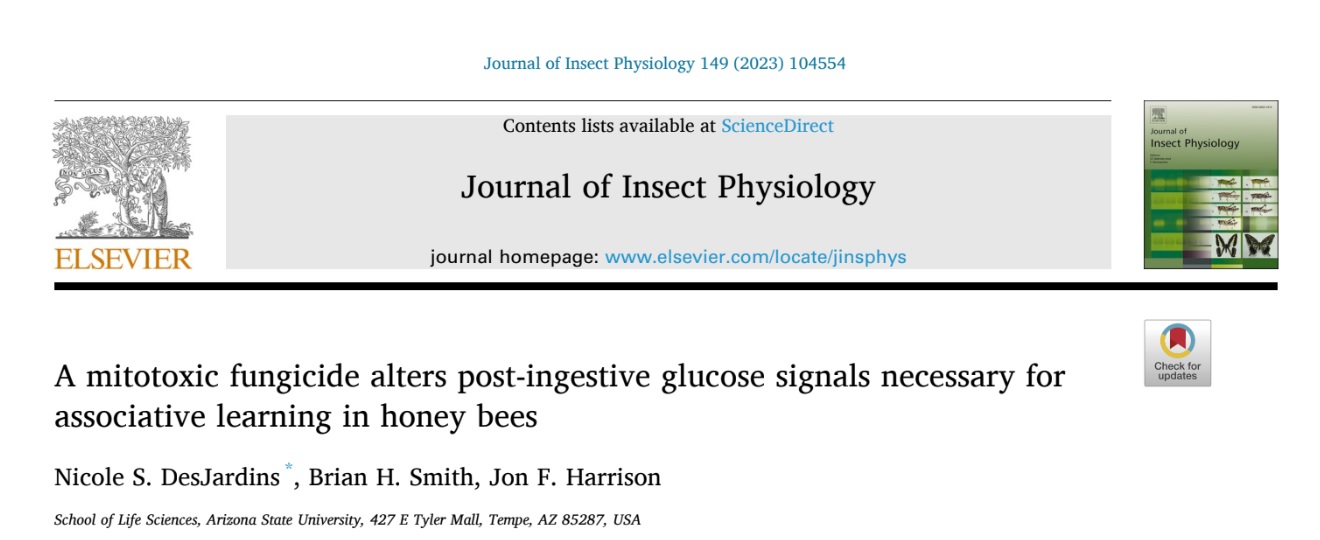
A great deal of research has investigated the effects that some pesticides have on honey bee
health, including sublethal effects such as behavioral changes. Yet, the effects of fungicides on
honey bees still remain widely unknown. This study delves into the effects of a common
fungicide, Pristine®, on honey bee behavior and learning ability – a critical component of a
healthy colony function. The research specifically focuses on how the fungicide affects “post-ingestive feedback”; the associative learning mechanisms that govern how an organism’s body responds to and acquires knowledge about the food it eats (which is essential for honey bee
foraging). Previous research had found that fungicide ingestion caused a decrease in honey bee
learning ability. This study suggests an explanation for how this reduction in learning occurs: via
a disruption in carbohydrate absorption and regulation. Essentially, exposure to the fungicide
causes bees to have high baseline levels of glucose in their hemolymph. Normally, when a bee
ingests sucrose (typically as nectar or honey), there is a steady increase in hemolymph glucose
levels, which causes post-ingestive feedback to “inform” the bee of the quality of the food
source. Bees previously exposed to fungicide have high hemolymph glucose levels to start, and
thus do not experience the normal steady increase in post-ingestive gluclose levels – thus they
do not learn about the sucrose content of their food. For beekeepers, these findings could
signify a possible link between fungicide exposure and impaired learning capacities in honey
bees, with potential implications for their foraging efficiency (at both individual and group
levels) and overall colony health.
April 2023 (by Robert Lu)
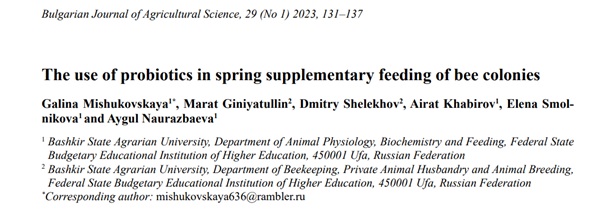
Spring is in the air again, and as seeds of food and flowers are sown once more, beekeepers should consider sowing something else: microbes. Over the cold Northern winters, honey bees must stay sheltered in their insulated hives where they feed on stored food and await warm weathers. But just because the snow is gone doesn’t mean there aren’t challenges left to face, as the months of confinement coupled with lower-quality food, antibiotic, and pesticide exposures often leave overwintering bees in frail health. This is especially true for their microbiomes, as the medicines used to stave off disease wreak havoc on their gut flora. To help overcome these challenges, the authoring team supplemented the spring bee feed of their experimental hives with known probiotics, such as lactic acid bacteria and saccharomycete yeasts. They then allowed the control and experimental bees to forage alongside one another for the following season and measured the development of the hive population alongside the production of honey. In colonies where probiotics were seeded, queen egg production was up to 25% higher than the control colonies. Furthermore, these colonies produced over 16% more honey, or an average surplus of 7.5kg (16.5lb) per colony! Going forward, these results suggest it may be good practice to apply microbial supplements to colonies as they emerge from their winter slumber, for quicker recoveries and greater honey harvests.
January 2023 (by Alexander Walton)

Managed honey bee colonies can face a lot of stressors simultaneously, and growing evidence suggests that these stressors synergize—causing more harm as a whole than the sum of each.
We often consider mites, pathogens, poor forage, pesticides, and more; but did you ever think
that even the presence of ants could exacerbate these problems?! Dobelmann, Felden, & Lester (2023) show that interaction with the invasive Argentine ant (Linepithema humile) can increase
deformed wing virus (DWV) levels in honey bee colonies. DWV is not honey bee-specific and so
it likely jumps hosts from bee to ant to bee again, making it much harder to control and
increasing the rate of transmission between hives in an apiary. Luckily, Argentine ants have not
spread to Alberta (though they have been recorded in British Columbia), presumably because
they cannot tolerate the cold. Yet, as climate change increases global temperatures, the range
of hospitable habitat for these ants could creep North. Moreover, beekeepers all over the globe experience the nuisance of ants (not just Argentine ants) filing into their hives and marching back out with their stomachs full of honey or their mandibles clutching larvae. It stands to reason that these ants could also be spreading viruses as they parade through the hive.
October 2022
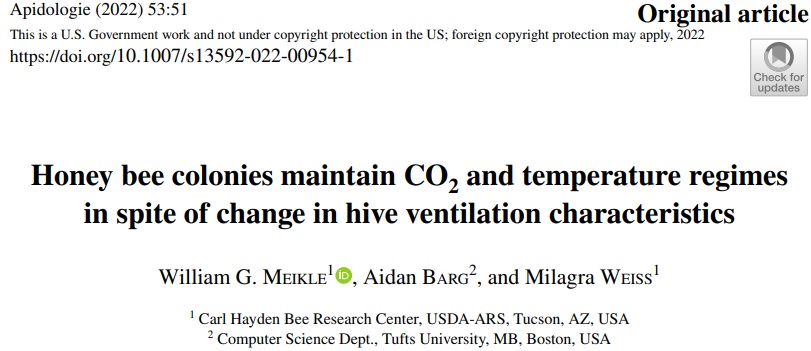
With many thousand insects sharing a close and confined space in the colony, the honey bees need to ensure that there is enough fresh air to breathe while at the same time maintaining a suitable temperature inside the hive. This is particularly relevant for bees in the winter cluster, although this study was conducted in Arizona. The authors compared screened bottom boards (more ventilation) with solid bottom boards (less ventilation) and surprisingly found that screened bottom boards did not lessen the maintenance of temperature in their hives but lead to an increase in carbon-dioxide, which honey bees breathe out to get rid off (just like other animals). The concentration of carbon-dioxide is slightly higher underneath the colony than above it because it is heavier than air. Also, it unsurprisingly followed a daily rhythm but overall this study does not show that bees have a problem with avoiding poisoning from carbon-dioxide and keeping warm under the study’s conditions. It remains to be studied whether that conclusion holds true for wintering (especially indoors) here in Canada.
September 2022

Even though this publication is a few months old, it shows some interesting effects of our grafting methods on queen quality. Honey bee queens are typically produced by queen-breeders by grafting eggs or young larvae from worker cells into queen cells. However, a previous study found that eggs laid directly into queen cells tend to be larger than eggs laid into worker cells. This study followed these results demonstrating that queens that develop from eggs that are laid into queen cells are larger and develop better than queens that are grafted as eggs or second instar larvae from worker cells into queen cells. Even more astonishingly, the queen daughters of these queens also differed in quality: The queen daughters of queens that developed (naturally) from eggs that were directly laid into queen cells were of superior quality than daughters of queens that were grafted as eggs or larvae. The study also showed that grafting eggs results in better queens than grafting larvae. So, while commercial queen production relies on grafting, it might not be optimal and perhaps alternative ways of mass queen production could be developed in the future.
August 2022
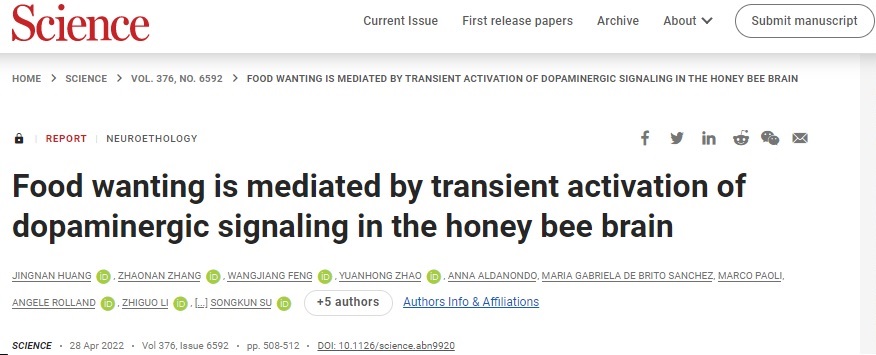
Honey bees and humans are different. That’s not exactly a profound statement. Bees and
humans diverged some 600 million years ago and have been evolving on separate trajectories
ever since. A bee’s brain is only 0.0002% the size of yours. An adult bees’ diet is predominantly
nectar; yours is probably a lot more diverse. Yet, a recent study in Science shows that the
psychological phenomenon of “wanting” food is facilitated by very similar neurobiological
pathways in both bees and humans. In mammals, wanting is mediated by dopamine in the
brain. Dopamine surges when we think about food – when we remember a food we like, or
when we anticipate eating. The same appears to be the case for honey bees! Huang et al.
(2022) found that brain dopamine levels spike when bees go out to forage, but then drop again
once they begin feeding. When the researchers pharmacologically blocked dopamine signalling,
would-be foragers stayed in the hive instead of foraging. Moreover, dopamine levels rise when
foragers perform waggle dances and then return to normal levels once again when the dance
ends. So, it appears that the dopaminergic system is activated, not only when foragers are en
route to a food source, but when they recall the food source as well! The same neurochemical
system regulates “wanting” in humans and bees, illustrating that honey bees continue to be a
great model for studying the general neural mechanisms that regulate behavior. The more we
understand about bees, the better we can understand ourselves.
July 2022
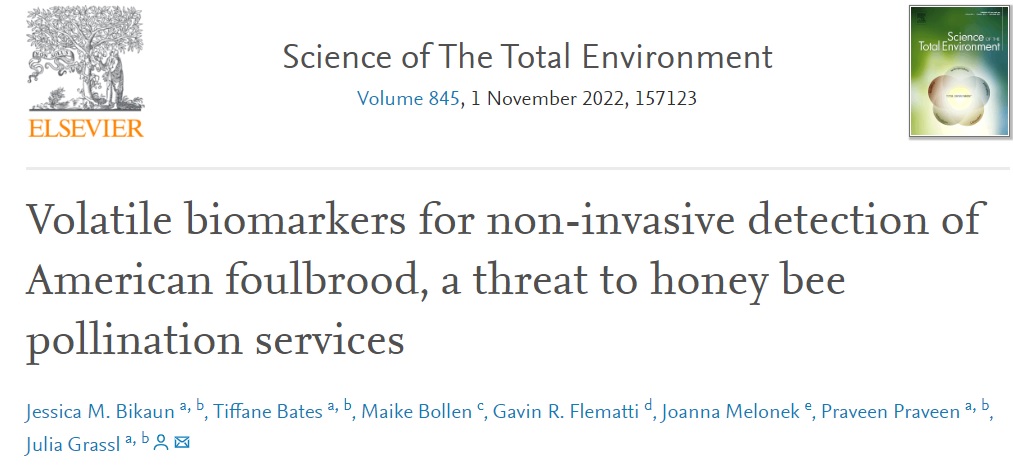
This study chemically analyzes what we all know: American Foulbrood has a characteristic smell! However, by identifying the specific chemicals in the air, it might be possible in the future to develop automated detection methods or tests that will allow us to catch AFB earlier to prevent full-fledged outbreaks.
